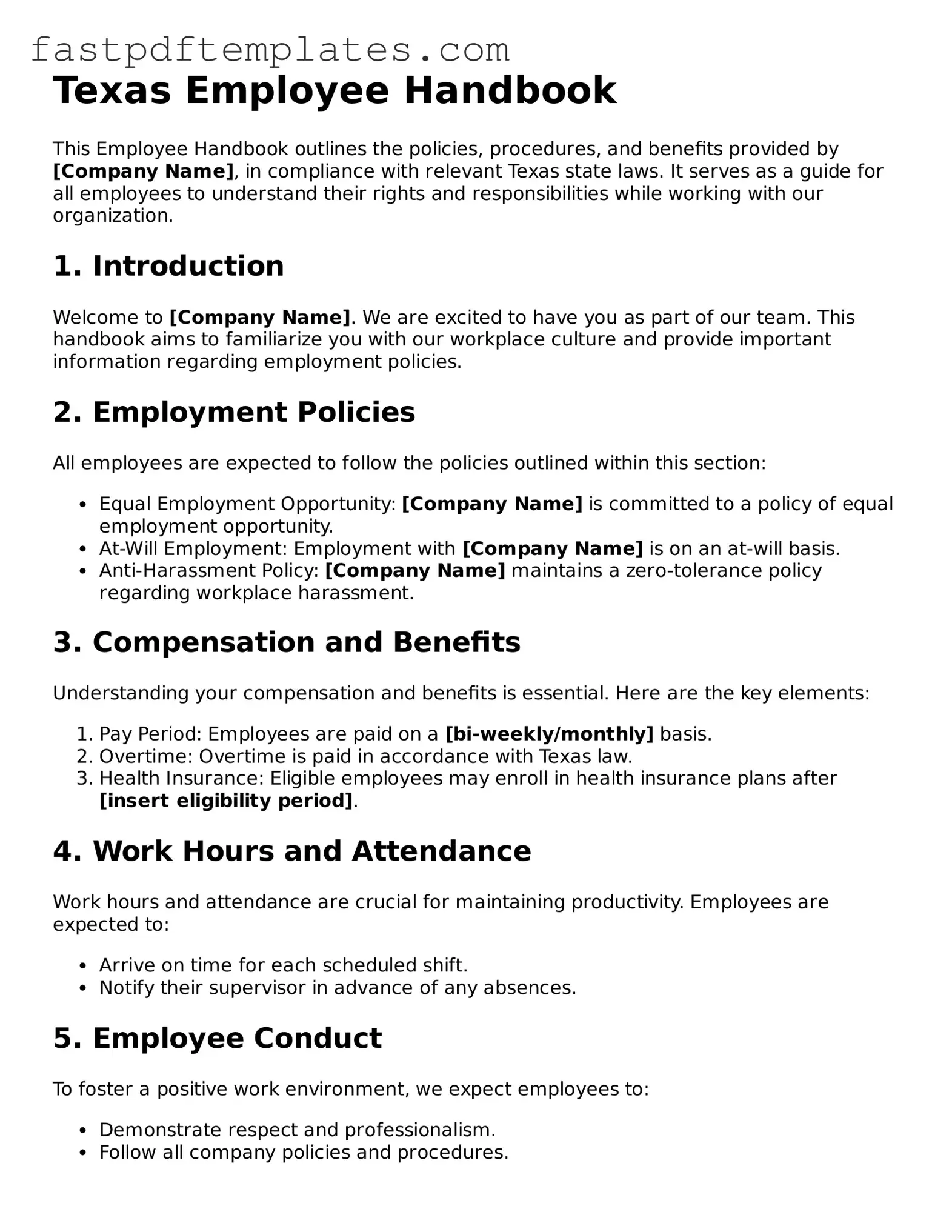Texas Employee Handbook
This Employee Handbook outlines the policies, procedures, and benefits provided by [Company Name], in compliance with relevant Texas state laws. It serves as a guide for all employees to understand their rights and responsibilities while working with our organization.
1. Introduction
Welcome to [Company Name]. We are excited to have you as part of our team. This handbook aims to familiarize you with our workplace culture and provide important information regarding employment policies.
2. Employment Policies
All employees are expected to follow the policies outlined within this section:
- Equal Employment Opportunity: [Company Name] is committed to a policy of equal employment opportunity.
- At-Will Employment: Employment with [Company Name] is on an at-will basis.
- Anti-Harassment Policy: [Company Name] maintains a zero-tolerance policy regarding workplace harassment.
3. Compensation and Benefits
Understanding your compensation and benefits is essential. Here are the key elements:
- Pay Period: Employees are paid on a [bi-weekly/monthly] basis.
- Overtime: Overtime is paid in accordance with Texas law.
- Health Insurance: Eligible employees may enroll in health insurance plans after [insert eligibility period].
4. Work Hours and Attendance
Work hours and attendance are crucial for maintaining productivity. Employees are expected to:
- Arrive on time for each scheduled shift.
- Notify their supervisor in advance of any absences.
5. Employee Conduct
To foster a positive work environment, we expect employees to:
- Demonstrate respect and professionalism.
- Follow all company policies and procedures.
6. Health and Safety
The health and safety of our employees is a top priority. Employees should:
- Adhere to safety protocols.
- Report any unsafe conditions to a supervisor immediately.
7. Acknowledgment of Receipt
By signing below, employees acknowledge receipt of this handbook and agree to abide by its policies:
Employee Name: [Employee Name]
Employee Signature: [Employee Signature]
Date: [Date]
8. Amendments
[Company Name] reserves the right to amend its policies and procedures at any time as needed, in compliance with Texas state laws.
For any questions regarding this handbook, feel free to reach out to your supervisor or the HR department.
